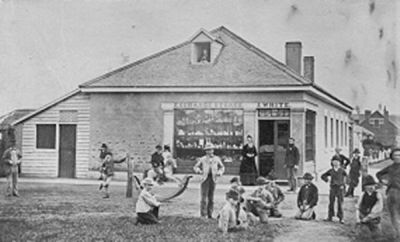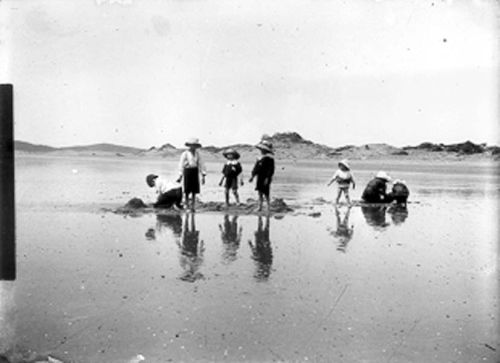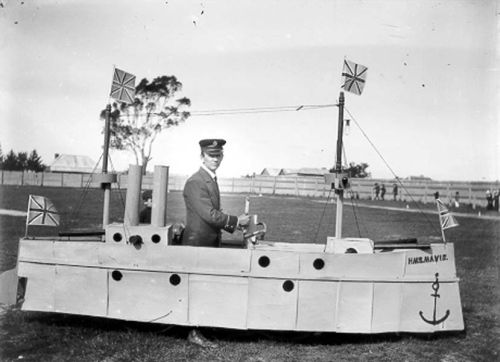 |
 |
|
Popular Culture
The popular culture of a people reflects their society, place and time. Whether in the games and ceremonies of Aboriginal Tasmanians or in the shared sports, pastimes and mass media enjoyments of later periods, popular culture or 'the culture of the people' is part of their way of life, not just an 'extra'. Tasmanian Aboriginal culture integrated the popular and the religious, through dance and decoration and story. In the early colonial period, as well as realising the necessary benefits of domestic crafts (for example carpentry, sewing and gardening) Vandemonians indulged in the play of a rough era – the games associated with public houses, from animal fights to ball games, and gambling. Shooting and fishing were necessities, providing protein as well as sporting pleasure, and continued to be popular for two hundred years, with boys later going rabbiting. Change occurred, through salmon and trout fishing, aided by the acclimatisation societies, and gun-clubs which shot at targets rather than game. Children pursued timeless pleasures – tree-climbing, playing goodies and baddies or being 'nurses', and emulating their sporting heroes in backyard feats of imaginary and sometimes real skill. Outside the house, boys and girls explored the creeks and the bush, building dams, forts and cricket pitches. Native cherries were a local version of the Christmas tree before charity stalls and service stations sold cultivated pines.
A new phase emerged in the mid-nineteenth century. The codification of sport meant increasingly regular rules and spectator interest in tennis, cricket and football. Entertainment included theatre and other performances. Although the Saturday half-holiday came later for many Tasmanian workers, sporting leisure, including cycling and tennis for the 'New Woman', sea-bathing and gardening offered many diversions. Betting with bookies or later on the new totalisator, or buying Tatts tickets, continued gambling traditions. Taking picnics with the aid of either the train or steamers took Tasmanians out of the cities or, for the rural population, into them.
Education and entertainment often went together in the form of slide and lantern shows, which gave way to variety shows at the Princess Theatre and the Theatre Royal, then films at grand cinemas such as Hoyt's Prince in Hobart and later the different environs of drive-in theatres. The content changed too, becoming increasingly American, especially the movies. At home, singing around the pianola or piano was strong until after the Second World War, while free libraries expanded reading as a leisure activity, as did the proliferation of magazines. Saturday night might mean going to hear musical 'stars' from the mainland or beyond, dancing at the Trocadero, or later going to hear the local band, the Kravats, playing at a suburban pub. Mid-century change also came through new domestic forms of entertainment and 'infotainment', the record-player and radio and television. The family car expanded leisure horizons, from Sunday drives, summer picnics and days at the beach to tourist travel. With the plane, northern sun and world travel also beckoned. Renovating, redecorating and shopping, were also leisure activities for many people. Others, perhaps more than in other states, preferred bushwalking and discovering the wilderness. By the end of the century, many home and backyard activities (even barbecues) were under challenge. The computer, video games and games consoles and the DVD attracted children inside and saw a diminution in those fusions of leisure and practicality, knitting, sewing and cooking. Fast food and fast fun were changing leisure while fast cars were both a cause of pleasure (on the track and on the streets) and a force restricting the sociability of the neighbourhood, from street footy and cricket to everyday walking. Yet, as sedentary leisure added to people's weight on the scales, some were called back again, to jog, to walk or just to reflect and amble. Work and leisure often went together: workplace jokes and football tipping competitions; shopping, cooking and sewing for pleasure as well as necessity. The new world of computers and the Internet offered infotainment and pleasure as well as being workplace tools. While some leisure activities continued in different ways, including old and new markets, drinking (wine as well as beer, and less gin than in Van Diemen's Land) and dancing, others declined slightly, such as smoking. Another 'vice' in early leisure – gambling – revived, through two casinos and poker machines. Matters of the spirit and the flesh had a cultural role, though often unrecorded: from prayer, ritual, sermons and singing hymns in church to the pleasures of food, dress and sex. Even as festivals also changed, from Labour, Regatta or Show Day to new festivals of food, cars and the arts, there were continuities. Popular culture and leisure remained local as well as being shaped by the Internet, Hollywood and Tokyo. Stephen Alomes |
Copyright 2006, Centre for Tasmanian Historical Studies |


